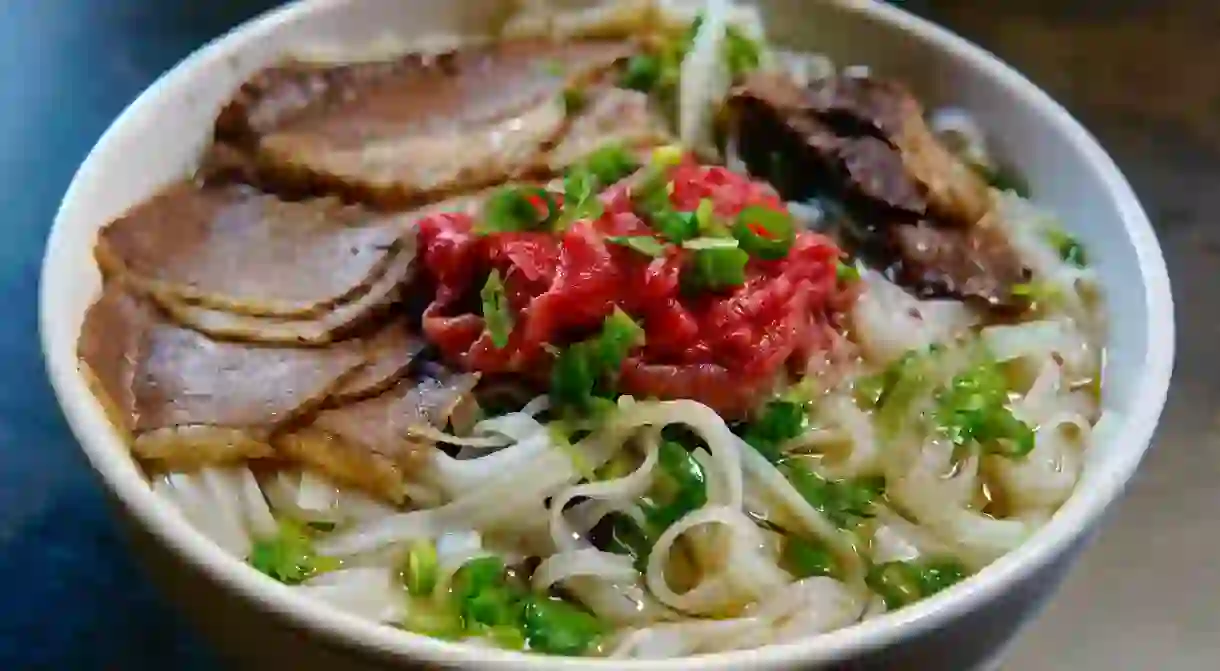The Correct Way To Pronounce 'Phở' (and Other Popular Vietnamese Dishes)

Being able to pronounce the names of Vietnamese dishes will make your life and waiters’ or waitresses’ lives much easier. Here is our guide on how to pronounce some of the most common Vietnamese dishes, and their meanings.
Phở is arguably the most popular Vietnamese dish, especially outside of the country. It may be Vietnam’s national dish, but it’s a relatively new addition to Vietnamese cuisine. There are three main components to a bowl of pho: a hearty broth, made by simmering animal bones and herbs down into a rich stock, rice noodles, and meat — typically beef. Herbs and garnishes are added on top, depending on your preferences.

It’s amazing how many people pronounce pho wrong, despite its popularity. While most people would say poe or foe, it’s actually pronounced more like fuh. However, if you head to a restaurant and mispronounce it, the waiters will figure out what you’re saying because the mispronunciation is so common.
There are many types of pho. Phở bo (beef) is the most common, whereas phở ga (with chicken) is gaining popularity. Lastly, heo is “pork.” If you are vegetarian, then look for phở chay (vegetarian) signs. It’s pronounced like yay but with a ch in the front.
Bun bo Hue is another noodle dish that originated from Hue. It’s the ideal dish for meat lovers; in addition to noodles and veggies, the dish is served with a huge pile of beef and pork. Bun bo Hue is pronounced boon bo ‘way. Hue is pronounced with a silent h. You can easily break down the name of this dish. Bun means “noodles,” and bo means “beef.” Hue is the city where it originated.

Bun thit nuong is also a meaty dish, made of grilled pork. It’s similar to bun cha, but the soup is different. Thit means “meat” and nuong (pronounced noong) means “grilled.” So it basically means “grilled meat noodles.”
Banh xeo is another popular dish foreigners sometimes cannot pronounce. This dish is the famous sizzling pancake, stuffed with veggies and meat. It’s a popular dish for travelers that reminds most of French crepes — but with an Asian take. Banh in Vietnamese means anything made from flour, like bread, cake, dumplings, or even noodles. Xeo is onomatopoeic in this case, and is supposedly the loud sizzling sound that’s made when the rice batter hits the frying pan. You pronounce it like say-oh.

A dish you will often come across in the south of Vietnam is com tam. Com is pronounced kom,like Tom, and means “cooked rice.” Tam means “broken rice” and is pronounced tum, like bum. Broken rice is a cheaper grade of rice, produced by damage in milling. Instead of throwing it away, in Asia, it is often used in dishes. You will find com tam served with either chicken, beef, pork, or egg, though grilled pork is the most common.
Goi cuon is probably Vietnam’s favorite starter. These are fresh summer rolls that are known for being healthy. Usually it’s rice paper rolled with a bunch of veggies and herbs, as well as some lean meat or shrimp. Goi means “salad” (in northern Vietnamese it’s nom) and is pronounced goy, like soy. Cuon, pronounced coon, means “roll.” It’s essentially a “salad roll.”

Lastly, all these dishes get served with a tiny bowl of “fish sauce,” or nuoc mam. Nuoc alone means “water,” and it’s pronounced nook. Mam, means “fish sauce.”
Now you will be an expert at navigating Vietnamese menus and understanding the components of various dishes. It’s way better than not knowing what you’re ordering.













